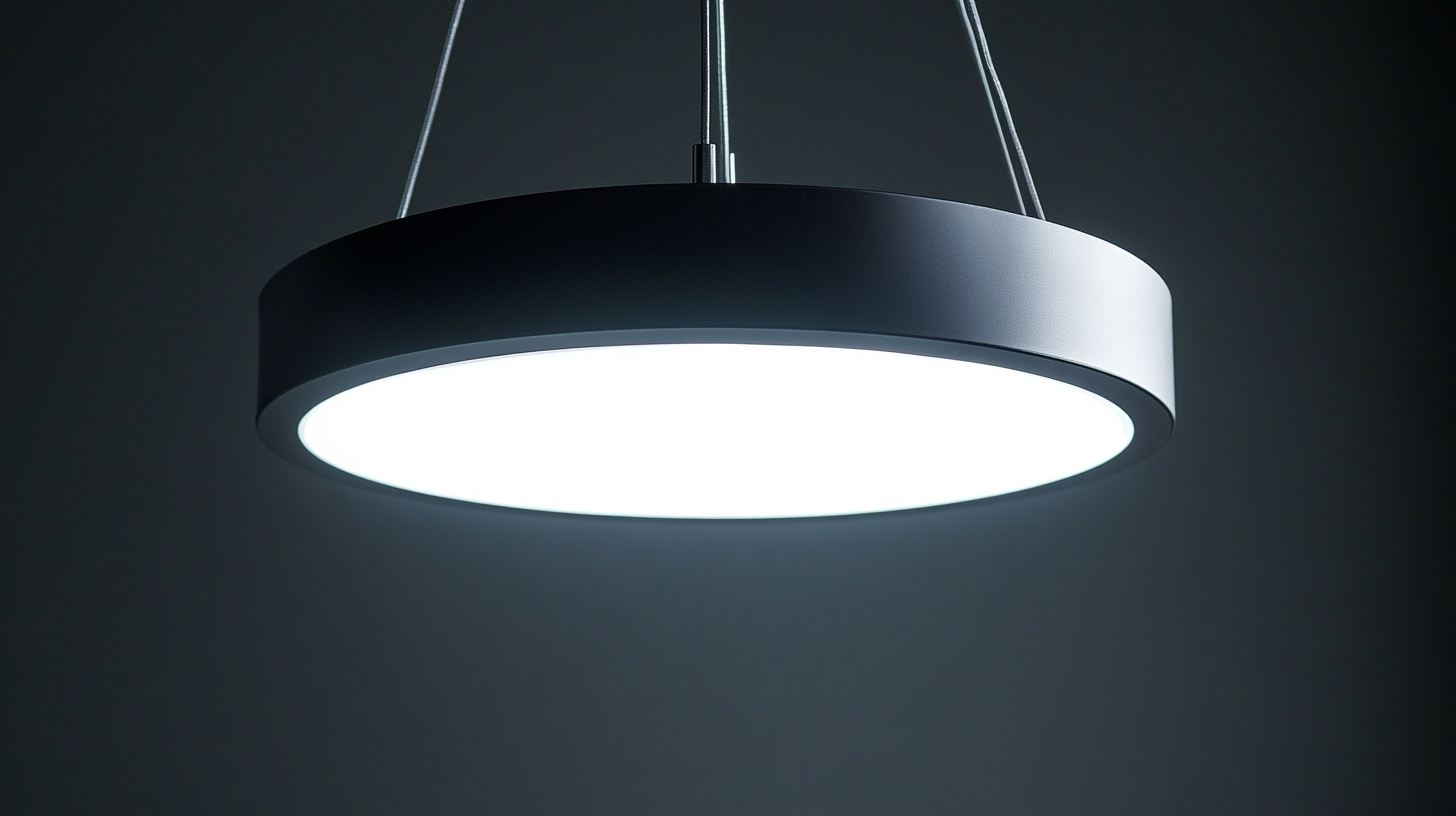Edison LED Lighting
Projects
Finding Reliable Suppliers for Led Ceiling Lights Expert Tips and Best Practices
In recent years, the demand for energy-efficient lighting solutions has surged, making LED ceiling lights an increasingly popular choice for both residential and commercial spaces. According to a report by Grand View Research, the global LED lighting market is expected to reach $105.23 billion by 2025, driven by the rising need for energy conservation and sustainable practices. As more consumers and businesses embrace this technology, finding reliable suppliers who can meet the quality and performance requirements of LED ceiling lights becomes a crucial endeavor.
Navigating the landscape of LED ceiling light suppliers requires careful consideration of various factors such as product quality, pricing, and customer service. A survey conducted by the Luminaire Manufacturers Association highlights that 60% of lighting professionals believe that supplier reliability directly impacts project timelines and overall satisfaction. Therefore, establishing partnerships with trustworthy suppliers not only ensures the procurement of high-quality lighting solutions but also enhances operational efficiency and fosters long-term success in the competitive lighting market.

Understanding Your Lighting Needs: Key Considerations for LED Ceiling Lights
When considering LED ceiling lights for your space, understanding your specific lighting needs is paramount. Recent studies indicate that appropriate lighting can enhance productivity by up to 20% in office environments, emphasizing the importance of selecting the right fixtures. Factors such as brightness, color temperature, and energy efficiency should guide your decision-making process. For instance, a color temperature of around 4000K is typically ideal for workspaces, as it mimics natural daylight and boosts alertness.
Additionally, the lumen output of LED lights plays a crucial role in determining brightness levels. According to the U.S. Department of Energy, LED lights use up to 75% less energy than traditional incandescent bulbs, making them an excellent choice for cost-effective and sustainable lighting solutions. For areas requiring focused illumination, such as kitchens or workspaces, consider fixtures with higher lumen ratings, while softer lighting may be preferable for living rooms or bedrooms.
Moreover, evaluating the layout and dimensions of your space can help in selecting the appropriate type and number of LED ceiling lights. The Illuminating Engineering Society recommends a general rule of thumb of 20 lumens per square foot in residential areas. Understanding your space's unique characteristics can lead to a more effective and aesthetically pleasing lighting design, ensuring that your selection of LED ceiling lights not only meets functional needs but also complements your interior decor.
Understanding Your Lighting Needs for LED Ceiling Lights
Researching Potential Suppliers: Where to Start and What to Look For
When embarking on the journey of sourcing reliable suppliers for LED ceiling lights, the first critical step is thorough research. Start by identifying potential suppliers through reputable trade directories, industry-specific trade shows, and online marketplaces. Look for suppliers that specialize in lighting solutions, particularly those with a strong portfolio in LED products. Exploring supplier reviews and ratings on various platforms can also provide valuable insights into their reliability and customer satisfaction levels.
In addition to gathering a list of potential suppliers, it’s essential to evaluate their credentials and industry experience. Check for certifications that indicate compliance with international quality standards, such as ISO 9001, which ensures a commitment to quality management. Furthermore, delve into their reputation within the industry by seeking out testimonials from previous clients or examining case studies that highlight successful collaborations.
Once you narrow down your list, reach out to potential suppliers to discuss their product offerings, pricing structures, and delivery timelines. Pay attention to their responsiveness and willingness to address your inquiries, as this can be a telling sign of their customer service approach. Finally, request samples or visit their facilities if possible, allowing for an in-person assessment of product quality and operational capabilities, which is crucial in making an informed decision.

Evaluating Supplier Credibility: Understanding Certifications and Reviews
When sourcing LED ceiling lights, evaluating supplier credibility is paramount. One of the most effective ways to ensure a supplier's reliability is by examining their certifications. According to a report from the International Energy Agency (IEA), around 75% of consumers consider product certifications a critical factor in their purchasing decisions. Suppliers with certifications such as Energy Star or the Department of Energy’s LED Lighting Facts label demonstrate adherence to high-performance standards, ensuring energy efficiency and product quality.
In addition to certifications, online reviews play a crucial role in assessing supplier credibility. Research from BrightLocal states that 86% of consumers read reviews for local businesses, indicating a significant reliance on peer feedback. Suppliers with positive reviews and robust customer testimonials highlight their reliability and commitment to customer service. It’s advisable to seek out suppliers with a consistent track record in quality and service, evidenced by a substantial number of high ratings.
Furthermore, engaging directly with past clients or industry peers can provide valuable insights into a supplier's reputation. Networking events and trade shows often facilitate conversations with other businesses that have experienced working with potential suppliers. Such firsthand accounts can offer a deeper understanding of how suppliers operate and their standing in the industry, thus making it easier to make an informed decision when selecting a supplier for LED ceiling lights.
Supplier Credibility Evaluation for LED Ceiling Lights
This bar chart displays the evaluation of supplier credibility based on various factors including certifications, customer reviews, and product quality. Higher values indicate better credibility.
Comparing Prices and Quality: Finding the Best Value for Your Investment
When it comes to purchasing LED ceiling lights, consumers are often overwhelmed by the sheer number of options available in the market. Understanding how to compare prices and quality is essential for making an informed investment. According to a report from the U.S. Department of Energy, the market for LED lighting is expected to grow substantially, with LED products projected to account for 84% of the lighting market by 2030. This surge in popularity means that numerous suppliers are competing for attention, making it crucial to evaluate both price and quality effectively.
One of the best practices for ensuring you find the best value is to look for certifications and quality standards. For instance, products certified by ENERGY STAR not only meet strict efficiency guidelines but also provide consumers with assurance regarding performance. A study from the Lighting Research Center indicates that while initial costs may be higher for high-quality LED lights, their longevity and energy efficiency can lead to savings of up to 75% on electricity bills over their lifespan, compared to traditional incandescent options.
When comparing prices, it is important to consider the total cost of ownership, which includes not just the upfront price but also the expected lifespan and energy costs. Data from the International Energy Agency suggests that while cheap LED options may attract buyers with lower initial costs, they often have shorter lifespans and higher failure rates. Therefore, investing in proven high-quality brands can lead to more significant savings in the long run, affirming the adage that "you get what you pay for." By keeping these factors in mind, you can make a smarter purchasing decision that balances price with quality, ensuring you get the best value for your investment.

Building Long-Term Relationships: Tips for Working Effectively with Suppliers
Building long-term relationships with suppliers is crucial for businesses, especially in the lighting industry, where reliability and quality are paramount. To foster effective partnerships, companies should prioritize transparency and open communication. According to a recent industry report, companies that maintain regular dialogue with suppliers report a 30% increase in efficiency due to better alignment on expectations and mutual goals. This level of engagement not only strengthens trust but also creates a collaborative environment where both parties can innovate and improve their offerings.
Investing time in understanding suppliers' values and commitments is another critical component. A survey from the Supply Chain Management Review highlights that 70% of successful businesses actively seek out suppliers who prioritize ethical labor practices and sustainable sourcing. Aligning values helps in building a sense of shared responsibility, allowing for more meaningful and long-lasting partnerships. When suppliers feel valued and understood, they are more likely to prioritize your business, which can result in a more reliable procurement process.
Moreover, engaging in strategic alliances can bolster these relationships. By partnering with suppliers for joint initiatives or projects, both parties can leverage each other's strengths to achieve common objectives while maintaining their individual independence. This approach not only enhances innovation but also creates a framework for shared successes. As leaders in the industry emphasize, fostering an environment of mutual respect and trust is key to empowering all stakeholders involved.
